Weeks i with a Humanistic Outlook - 2018
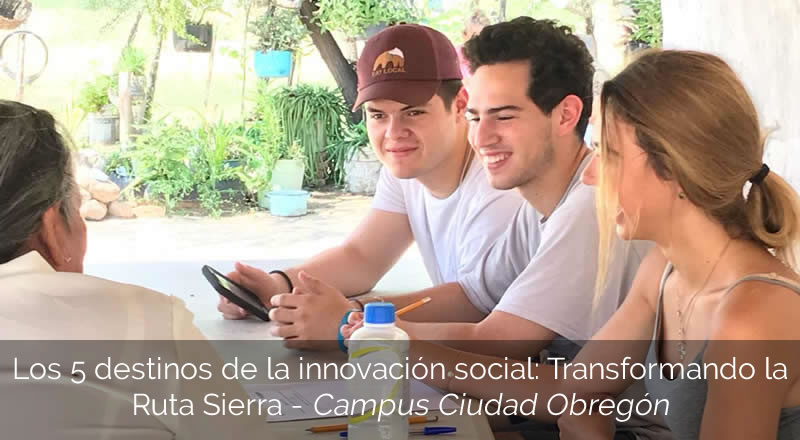
Context
The poorest communities in Sonora consist of the indigenous peoples, the Mayo, considered the most numerous, and the Yaquis, considered the most representative of the State, with approximately 150 Native Mexicans inhabiting southern Sonora. Their main economic activities are agriculture, stockbreeding, fishing, producing utilitarian and ceremonial craftwork, and salaried jobs. In 2015, INEGI (Mexican National Institute of Statistics and Geography) reported that 49.6 percent of the indigenous population in these communities are women. Grameen de la Frontera is a nonprofit organization that seeks to strengthen women and their communities through the design and execution of economic and social development programs. It has been operating in 10 municipalities in southern Sonora for the past 20 years, impacting the life of more than 42,000 families who live in rural communities. With the help of students, they developed business models to assure the sustainability of rural businesses.
Challenge(s)
Students were set the following challenges:
- Identify the needs of five rural zones in order to develop proposals for the collective work of women microentrepreneurs and implement practical solutions.
- Students will put all their talent and capacity for innovation to the test, offering practical recommendations with relevance, viability and sustainability criteria, rising to a level of impact in social entrepreneurship, ethics and a humanistic outlook.
Outcomes
The outcomes of the intervention were:
- More than 20 women entrepreneurs given advice on their business model.
- Proposals for improvements to achieve business sustainability and expansion.
- Participatory sessions with women from the Bahía de Lobos, Masiaca, Etchojoa, Tetabiate and Álamos indigenous communities.
- Connection with Grameen de la Frontera to follow up on the implementation of the proposals that students made to the rural entrepreneurs, obtaining operational and financial support from Grammen de la Frontera
Sustainable Development Goal(s)
The SDGs linked to the challenge are:
- 1. End poverty in all its forms everywhere.
- 5. Achieve gender equality and empower all women and girls.
- 8. Promote sustained, inclusive and sustainable economic growth, full and productive employment and decent work for all.
Education partner organization
The bridge between the actors of the block and society was:
Grameen de la Frontera Sonora.
Population
The sector of the population impacted was:
Women microentrepreneurs from the Bahía de Lobos, Masiaca, Etchojoa, Tetabiate and Álamos rural areas supported with microcredit from Grameen de la Frontera.
Learn more
The following images (PDF file) show some examples of the activities that students carried out in conjunction with the educational partner organization and the inhabitants of the different communities.
Learn more
The following images (PDF file) show some examples of the activities that students carried out in conjunction with the educational partner organization and the inhabitants of the different communities.
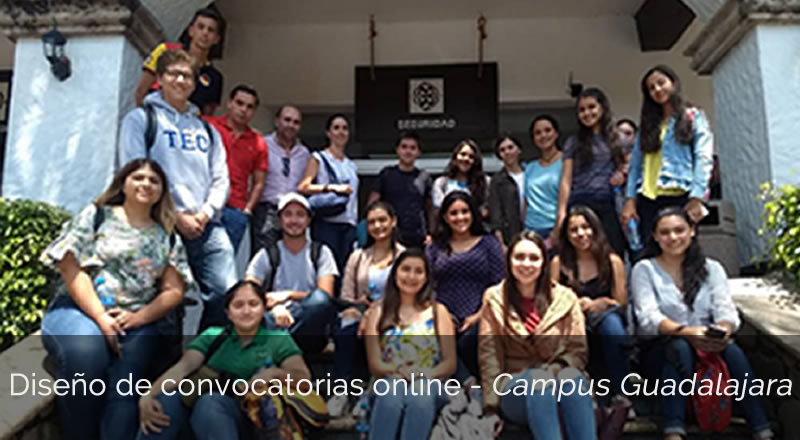
Context
The Experience took place in the Bosques de San Isidro community in Zapopan, Jalisco. The problem addressed was to determine how this community could improve its relationship with its environmental setting, since it is located in the San Isidro Forest, a major green area for the Metropolitan Area of Guadalajara.
The situation is that the flow of information on important environmental topics between the non-profit organization Bosques de San Isidro and the Bosques de San Isidro neighbors was inadequate.
Challenge
Students have to define the diverse online audiences that the nonprofit should be addressing, in order to be successful in encouraging and inviting them to support this organization’s cause.
Intervention outcomes
a) Ethnography: the students studied the environmental situation of the Metropolitan Area of Guadalajara by reading two texts, then visiting the San Isidro community, located in the subdivision Fraccionamiento Las Cañadas, where they divided into six teams to learn the opinion of the people involved on the following topics, in order to gain greater insight and know how to design the most suitable online invitations:
- Security
- Responsible water use
- Promotion of interaction among neighbors
- Waste sorting
- Fostering improved relations between the San Isidro community and the inhabitants of Las Cañadas
- Fire prevention and natural disaster preparedness
b) Netnography: the students evaluated the organization’s online presence on its website and analyzed the messages sent by neighbors through the WhatsApp group .
c) The students experimented with different types of formats (result of the ethnography and netnography) to propose the most successful invitations on WhatsApp.
d) The students designed online invitations using the CANVA template (website with graphic design tools) to catch the attention of the diverse audiences of neighbors targeted by the Association via WhatsApp.
e) The students presented their proposals for online invitations to the members of the Bosques de San Isidro Neighborhood Association. They demonstrated why it is important to have just six key areas in the information sent by WhatsApp and to reinforce it with flyers and posters
- Security
- Responsible water use
- Promotion of interaction among neighbors
- Waste sorting
- Fostering improved relations between the San Isidro community and the inhabitants of Las Cañadas
- Fire prevention and natural disaster preparedness
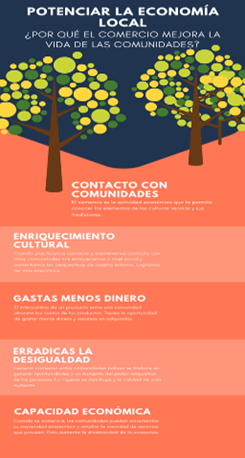
f) The students showed the importance of brief, well-written, engaging texts for the average audience who use WhatsApp in Las Cañadas: 37 years old
g) The invitations created by the students were very creative, with one team even including a video.
h) The education partners (representatives of the nonprofit organization) were satisfied with the students’ proposals and want to implement them, through the Communication students’ internships.
i)The beneficiaries are, first of all, the representatives who run the neighborhood association; secondly, the neighbors, who will be informed of priority topics that would lead to improvements in the environmental setting of Bosques de San Isidro; and, finally, the inhabitants of the Metropolitan Zone of Guadalajara, since protecting the forest and its fauna would ultimately result in the conservation of one of the city’s green areas.

Challenge
To create awareness of sexual and reproductive rights as an issue related to the exercise of citizenship, through participation in workshops on the reality of this subject in the metropolitan area of Guadalajara. Students also formulate a survey to generate and disseminate information on this issue.
Intervention outcomes
The deliverable consisted of a violent and at-risk behavior perception instrument (applicable to the Tecnológico de Monterrey, Campus Guadalajara, student population, regarding the issue of the perception of citizens’ rights to healthcare and sexual and reproductive health services). Beneficiaries: Tecnológico de Monterrey, Campus Guadalajara, student population.
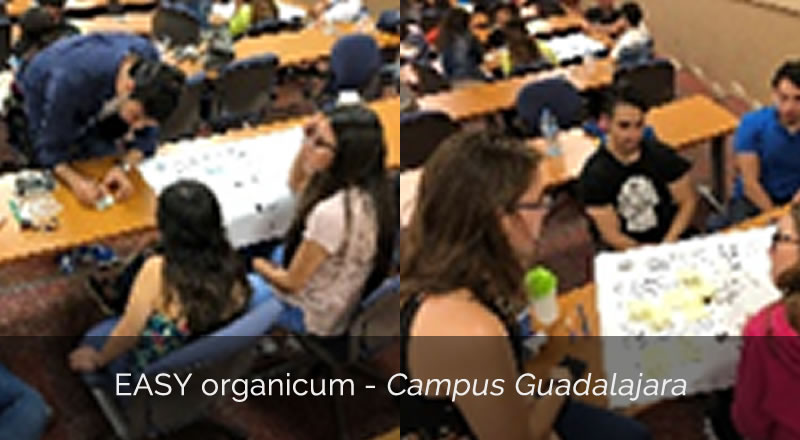
Context
Location: TEC de Monterrey Campus Guadalajara (1 day) and Urban Forest of EXTRA A.C./ Zapopan, Jalisco (4 days)
This Week i is designed so that students will come to understand global environmental issues regarding the excessive production of plastic containers and other waste materials, apart from developing and informing society of viable solutions.
Challenges
- Reuse by adapting containers for organic horticulture, actively promoting a green culture.
- Build electronic catalogues of the transformed containers to be posted on websites and social networks to offer structured information on how to transform waste containers into plant pots for organic horticulture.
- Organize a showroom to display the plant pots publicly in the nonprofit’s nursery, so that the general public can see and adopt these forms of reuse.
- Investigate biodegradation and environmental legislation in Mexico to understand how to orientate a green culture in their community.
Context
Location: TEC de Monterrey Campus Guadalajara (1 day) and Urban Forest of EXTRA A.C./ Zapopan, Jalisco (4 days)
This Week i is designed so that students will come to understand global environmental issues regarding the excessive production of plastic containers and other waste materials, apart from developing and informing society of viable solutions.
Intervention outcomes
Transformation of trash into plant pots for organic horticulture.
Creation of a video to demonstrate the transformation process.
Setting up the showroom to exhibit these waste management opportunities.
Information and investigation to implement a green culture.
Specific environmental culture training.
The achievements obtained include :
-
Well-articulated, collaborative and successful teamwork (everything was delivered on time and in due form).
- Commitment that went beyond the activity (some students are developing their own urban orchards and preparing compost at home).
- Commitment beyond the activity (some students are reusing trash at home).
- Theoretical and practical knowledge on plants and natural products (some students transplanted for the first time, and learned about the qualities of plants and how to make shampoo and soap).
- Beneficiaries
- The students regarding what they learned, developed and experienced in the activity.
- Society in relation to having access to this type of waste transformation through the showroom and the video or catalogue.
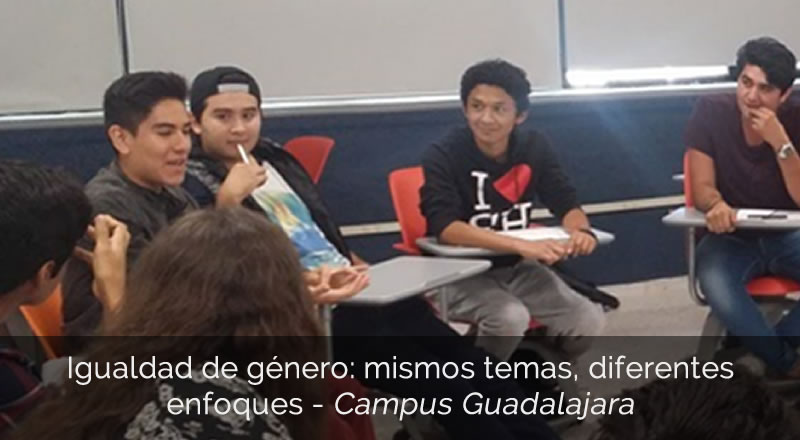
Challenge
To generate a quality media product that could be of use to the education partner and that reflects the ideals and objectives of the association, as well as its mission of generating environments that foment empowerment, autonomy and a violence-free life for women.
Intervention outcomes
The participants enjoyed a week of reflection on gender equality based on different perspectives and approaches. The objective was for the students to recognize this issue in their own reality and context.
The education partner was the nonprofit organization Construyendo Redes de Bienestar para la Mujer y su Familia (Building Wellbeing Networks for Women and their Families), which focuses on generating environments that foment empowerment, autonomy and a violence-free life for women.
At the end of the week, students delivered five media-related products to the Education Partner Organization, which are currently being implemented on its social networks and with its users.
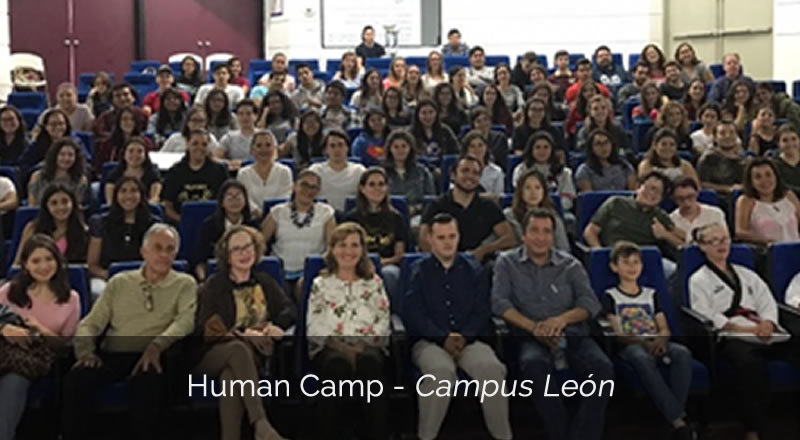
Challenge
To become aware of topics related to children with disabilities and to reflect on how to include them in education stages to achieve social and work inclusion.
Intervention outcomes
The student learning experience was divided into three major stages:
- Awareness and knowledge: during the first two days, the students met with families who have a child with Down syndrome, so that they could explain from their perspective what happens and how to treat/educate/love a child with these characteristics.
- They then generated a documentary investigation of what this syndrome is, how it occurs, and data in Mexico City/Guanajuato/León and what can be done about it.
- Hands-on experience in the Association: the students visited the “Amigos del Down” association and spent a whole day participating in activities with the teachers, psychologists and therapists.
- Planning and working for two days at the Tec with children with Down Syndrome. After the stages of learning, awareness and spending a day with them, the students planned on-campus activities (differentiated by age for the children/teens with Down syndrome), where they used all their personal, social and professional skills to organize a rally with a variety of activities. This challenge was extremely gratifying for everyone.
- Students became aware of, learned about and had the opportunity to work with people with some form of disability, and realized how gratifying it is to be with them and how they can be included in society and in the workforce.
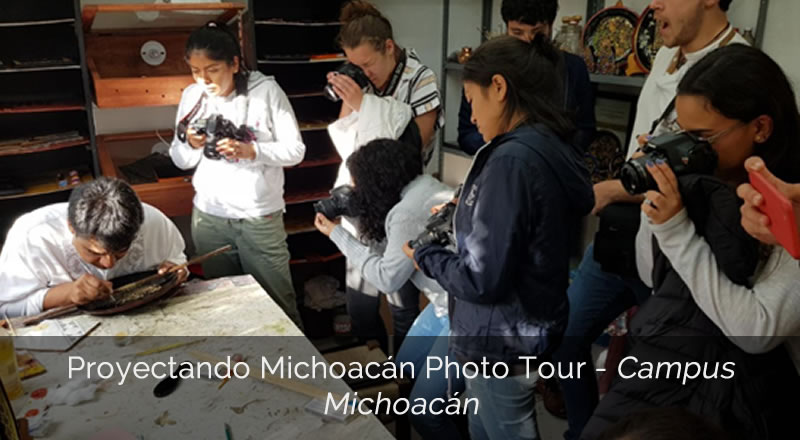
Context
This Week i activity forms part of an awareness project about Michoacán culture. The objective is to foster reflection on this state’s resources and contribute to its promotion, while driving the region’s economic development. The activity took place in Morelia, Capula, Santa Fe de la Laguna, Ihuatzio and Pátzcuaro. The students’ work helps the community to recognize, value and appreciate the artwork of the region’s artisans.
Challenge
To develop creativity and visual skills using the camera as a means of expression, learning about basic visual composition to create a photography series that reflects the traditional clothing, architecture, daily life, festivals and rites of Michoacán.
The challenge is a theoretical-practical activity to learn about the functioning of a digital reflex camera in manual mode and also to document popular culture and art by means of a photographic tour of the villages in the Riviera del Lago de Pátzcuaro region in Michoacán, with the aim of disseminating and promoting their traditions.
Intervention outcomes
Students developed creativity competencies and visual skills using the camera as a means of expression and learning the basics of visual composition. They visited the Capula, Santa Fe de la Laguna, Ihuatzio and Pátzcuaro communities, photographically documenting the work of the region’s artisans, conducting interviews, learning how arts and crafts are made, and becoming aware of their cultural and economic importance. The students’ photographic work was exhibited together with another Week i activity, which consisted of a comprehensive concert of traditional Michoacán music, held in the historical center of the state capital, Morelia.
The participating students developed creativity competencies and visual skills, and used them to contribute to the awareness and promotion of the cultural importance and wealth of Michoacán, thereby driving the region’s economic development.
The students handed in photograph dossiers and essays, which displayed the competencies of empathy and social commitment they had developed, responding constructively, fairly and with solidarity to outside circumstances.
The beneficiaries were the students themselves, the Michoacán artisans and the community who viewed the photograph exhibition held within the framework of a comprehensive concert in the historical center of Morelia, the audiences who will be able to view the students’ work on digital media, and the people who will benefit from the economic development that results from the promotion of Michoacán art.

Challenge
To write a creative socio-promotional text in two languages (Spanish and English) that could be used by the children’s home group, Hogares Providencia, to attract more donors and funds in Mexico and abroad.
Intervention outcomes
The texts written by the students surpassed all expectations, given that they completed an observation process and interacted with the children during their normal morning routine, enabling them to study all the rituals, habits, forms, etc. that occur in Hogares Providencia on a typical day and then write an article.
The students interviewed people who had graduated from Hogares Providencia to gather their testimonies of how this institution had had a positive effect on their lives and then expressed in their texts the human and social importance of the homes’ work. Afterwards, they produced and presented the texts to the members of the Hogares Providencia Trust and some of their most important sponsors.

Challenge
To develop dissemination prototypes (products) for the problems, preventions and solutions identified in diverse topics related to children in Mexico.
Intervention outcomes
“Decent Childhood, Active Citizens” is a Slow U Challenge. Students worked with this methodology for the first two days of the week. The students split up into nine teams of four to develop the dissemination prototypes (products).
The education partner, the UN Information Center Mexico, participated during the student awareness stage. The center contributed decisively in revealing a reality that the students had been shown before starting the challenge, but that was distant, since they didn’t know anyone who had personally experienced a situation in which a child’s rights had been violated.
As a result, the students felt indignation, impotence, astonishment and realization of the reality of children in the country, the city and close to home, in their own environment. This motivated the group to identify specific issues in the diverse realities of children and orientate the prototyping process towards them.
Once each team had identified its objective, they defined their target audiences in order to generate blogs, posters, activations on Instagram and social networks to disseminate the prevention and solution of the difficulties identified, which were presented to the education partner on the last day. The education partner was pleased with the results of several of the projects and with the students’ interest and commitment, acknowledging the short amount of time available to develop the prototype.
An internal survey on the challenge was conducted to determine students’ perception, with the participation of 82% of the group. 100% of participants reported having acquired new knowledge.
42% commented that the challenge had made them more aware of the issues related to children in Mexico.
100% said that “Decent Childhood, Active Citizens” changed their way of thinking regarding the day-to-day reality of children.
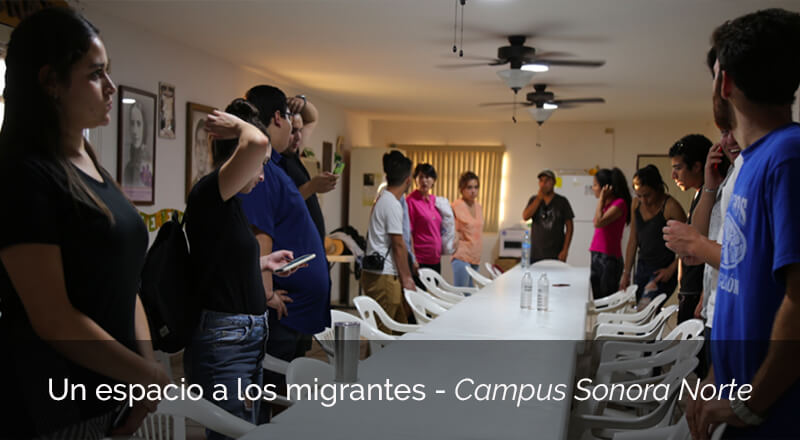
Challenge
Make students aware of the problems faced by migrants through the production of a video-report that tells their stories.
Outcomes
Students got together to buy, prepare and serve dinner to the migrants. During dinner, the students took the opportunity to talk to and interact with the migrants. The outcome was exceptional because, in less than three hours, they managed to bond with the migrants. The results are not quantifiable as they cannot be measured, but the product the students delivered, the video-report, demonstrates the high level of compassion they developed. The benefit for society is access to the garbage transformation process through the showroom and video or catalogue.
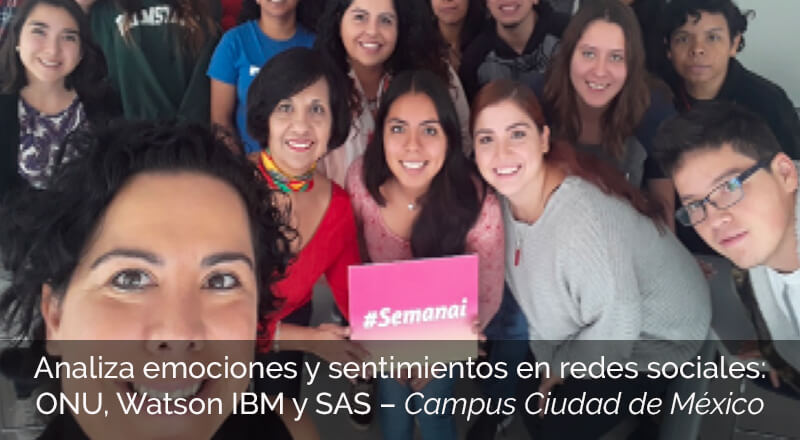
Challenge
Co-design posts, short phrases that will have an impact on young people, responding to the analysis of emotions. Students predict which phrases and posts will have the greatest and which the least impact by analyzing the databases offered by IBM.
Outcome of the intervention
Students submitted a list of positive words and a list of negative words. They proposed phrases and analysis manuals for the next messages. The students managed to gain insight into otherness, based on the unknown. They understood that knowing their priorities does not give the right to manipulate, even though apparently well-intended. The students were able to understand the power of information and the responsibility that comes with it. Communication media users, such as UNIC, were directly benefited. Since UNIC has excellent communication practices, users will be better informed. Students from different degree programs participated, giving them the chance to perform real-world work. In other words, students understand that an analysis cannot be created without a preliminary investigation, and that the emotions analyzed have to be catalogued, measured, shown and supported by researchers. In addition, social networks and their algorithms depend on humans and target humans.
